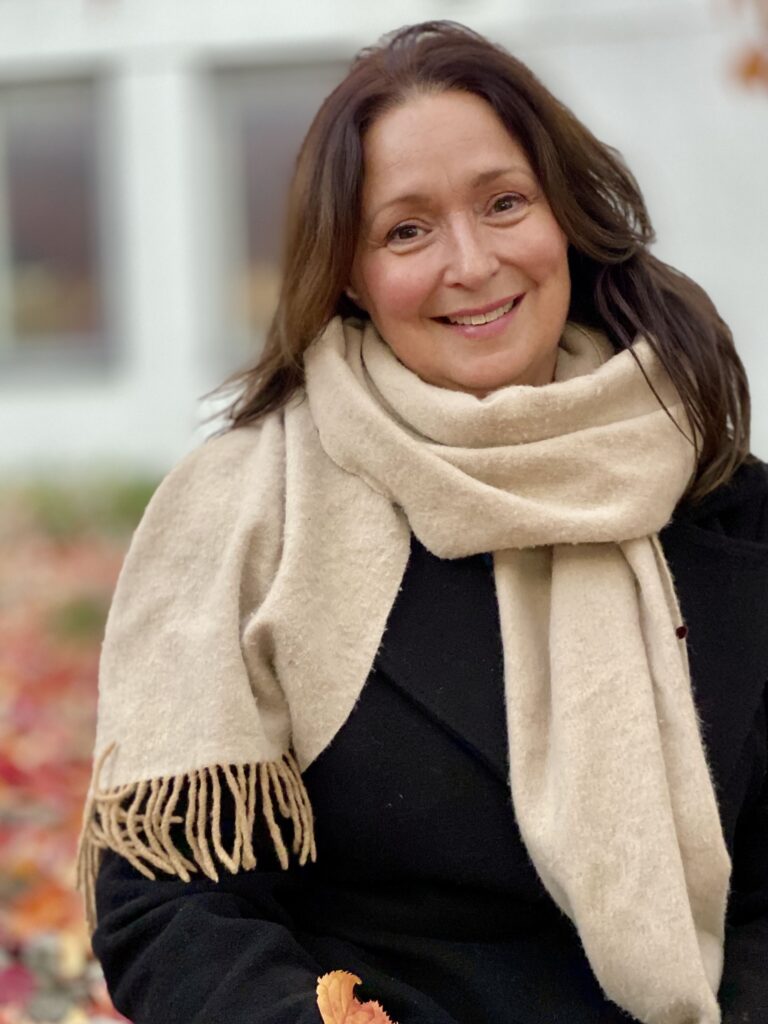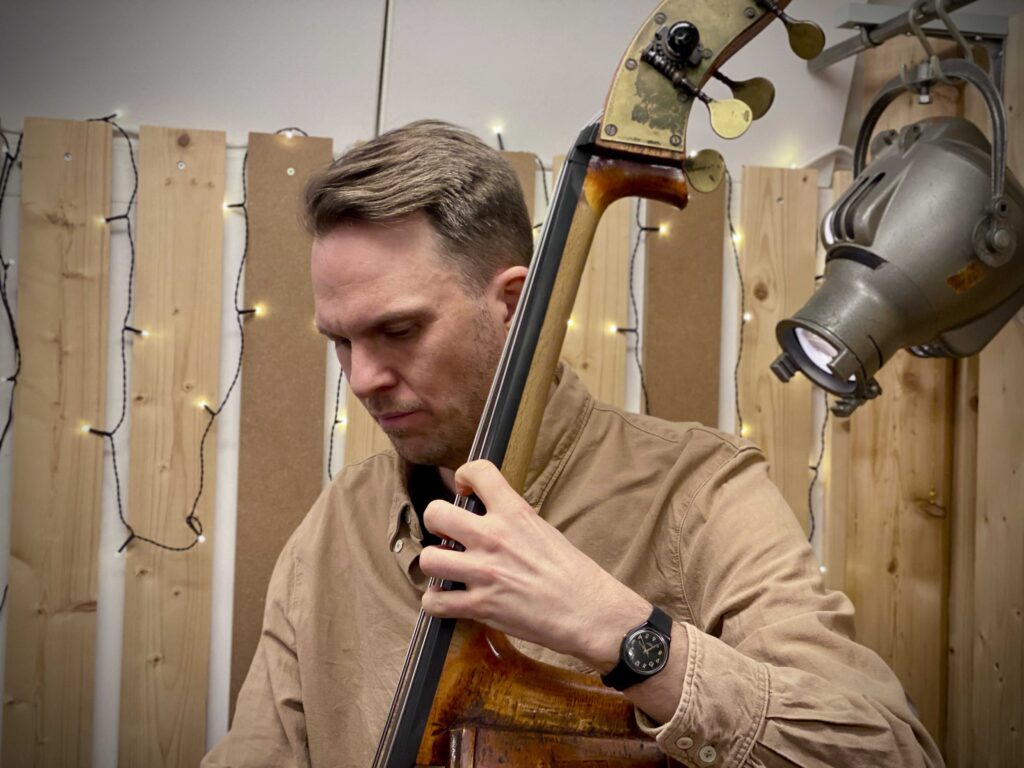Hidden within Stockholm’s elegant art scene, Three Small Giants have been bubbling away for the past two decades, offering a personal, intimate and eclectic take on smooth jazz and stripped-back fusion. Championing the celebrated trio formula, Karina Kampe (vocals), Patric Skog (guitar), and Lars Ekman (bass) perform stripped-back, beatless material, both covers and originals.
‘As Silent As Dawn Came: 2025’ is Three Small Giants’ latest effort, a stunning album showcasing the group’s limitless and nuanced artistry. Perhaps not for everyone, the record gifts the listeners an unmatched aural experience, one that’s blessed by Kampe’s dynamic, precise and evocative vocals, Skog’s eclectic guitar improvs and Ekman’s grounding, solid double bass.
Intrigued by the project, we caught up with the Swedish group to learn more about their artistry and origins… Interview below!
Hey Karina, Patric and Lars, thanks for chatting with us! I have been diving into your latest album recently, and what struck me the most is how you are able to craft such blissful, creative arrangements with just double bass, guitar and vocals. Can you shed some light on the trio’s origins?
Karina and Patric met while studying at Berklee College of Music in Boston, and when we returned to Sweden, it was natural to continue playing together. The band was formed in 2004 and has had a few bassists since then. The trio format lends itself beautifully to creativity, allowing us to craft arrangements based on counterpoint melodies and complementary harmonies. We strive to be distinct in our approach to arranging. When you have more players, it’s easier to hide in the mix. In a trio, everything needs to have a purpose – or not be there at all.
I am sure you have received great feedback from your performances; how active are you in the live circuit (especially in Stockholm, where you are based)?
Over the years, we’ve been very active on the live circuit. Karina and Patric have played together for almost 25 years after meeting at Berklee College of Music in Boston. The last few years we have focused on our solo work. Patric has Smooth Collective where he dives into another style of jazz. Karina has done a 180 when she moved to Gotland in the middle of the Baltic Sea in 2019 to have a baby at 47 and then the pandemic hit, so this is really a comeback into music! Although she is also releasing a lot of her own material as a solo artist. We consider live performances our primary outlet for music and creativity – we truly thrive in the live setting! Our current focus is on expanding beyond Sweden’s borders and reaching international audiences. Our music is deeply rooted in American musical traditions, likely influenced by our time on the U.S. East Coast.

‘As Silent as Dawn Came’ is your latest album, a stunning, elegant collection of acoustic jazz nuggets, a charming mixture of covers of famous songs from neighbouring genres and originals. How do you go about picking the right cover, are there any requirements they must meet in order to be considered? I guess some records can be adapted better than others?
“As Silent as Dawn Came” mirrors a line from Karina’s new lyrics to Wayne Shorter’s classic “Footprints.” Regarding cover selection, some songs seem to adapt themselves naturally. Take “She Loves You,” which Karina transformed into a suggestive 5/4 time signature – that arrangement emerged organically, almost releasing itself from her mind. Other arrangements have been shaped and tested live over time, gradually falling into place, while some potential covers end up in the “roadkill category” and are left by the wayside.
The process usually begins with a love for a particular song, melody or lyric and then we either separately or collectively look for maybe a distinctive rhythm or style that can make it our own. “In the Wee Small Hours” evolved from a sweet ballad into a funky attitude with a distinctive bassline contemplating those early morning hours. Similarly, “Doodlin'” incorporated some James Brown licks and actually works brilliantly on the dance floor. Our simple trio format allows us to explore our instruments fully, as well as the pauses and spaces between notes. Those silent moments are just as important as the notes we play.
As a Steve Gadd (Paul Simon’s drummer) fanboy, I always rejoice whenever I see people covering ’50 Ways to Leave Your Lover’. Your rendition has a certain melancholia to it, a touch of sadness and understated nostalgia that’s not present in the original. Do you think that’s a side effect of not having a percussion instrument in the mix? Compositions tend to float towards hazier, more evocative territories…
Karina: I just love that song, especially the bridge. I created an ostinato bass line that formed the foundation of the entire arrangement, and from there, the groove developed naturally. And yes, nostalgia plays a significant role – lovers lost and time passed. It feels like an old soul telling the story. Paul Simon is such a marvellous songwriter, and the song is so complete in itself that it can take on many shapes while its essence remains intact. The same applies to Beatles songs – you can twist and turn them, always finding new interpretations or shapes, but the core remains unchanged.
Was the album arranged collaboratively, or is anyone in the trio taking a lead role?
Different songs have different stories behind them. Some arrangements were created collectively as a group, while others were arranged individually and then brought to the band. Of course, being a performing band, we’ve tested and refined these arrangements through many evenings on stage, which has significantly shaped the final versions. We each bring our unique flavour to the mix.
What’s the jazz scene like in Stockholm? I visited the city in the past and places such as Fasching are stamped in my memory.
Sweden has a solid jazz tradition, but like the entire live music scene here, clubs are struggling and often run by passionate enthusiasts, many in their senior years. Thankfully, there’s a wave of younger organizers emerging. But it’s a struggle. Crossover jazz like ours isn’t confined solely to the traditional jazz scene. We often find our audience in unexpected places. For instance, we once played at a physicians’ conference at Berns Salonger in Stockholm (one of the premier venues that even Strindberg wrote about), thinking we were merely providing background music, but ended up receiving standing ovations and connecting with many new fans. You never know where you’ll find your audience, and we love embracing unexpected opportunities.

Have you considered writing original material?
Absolutely! In fact, there are three original compositions on our current album. Karina wrote “Kind of Blue” and “Breathing Freely,” while “Maria” is a co-write between Karina and Patric. Coming later this year is another Karina/Patric collaboration, and we all maintain solo projects as well. Patric leads a project called Smooth Jazz Collective, Karina performs extensively as a solo artist under her own name, and Lars Ekman, our newest member, is releasing an album with his own group. Original material is something we’re passionate about and always integrate alongside our interpretations. Karina also wrote new lyrics for “Footprints” on the current album.
What are the next steps for Three Small Giants? Anything exciting on the horizon?
We’re releasing a new EP this spring featuring some really exciting arrangements, including fresh takes on “Smoke on the Water” and “Englishman in New York.” Next up is Jazzahead, where Patric will be representing the band, and hopefully this fall, we’ll be hitting the road for a tour. We’ll continue recording and arranging new songs while releasing material consistently. Our goal is to keep expanding our audience both in Sweden and internationally.



